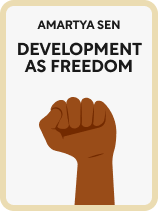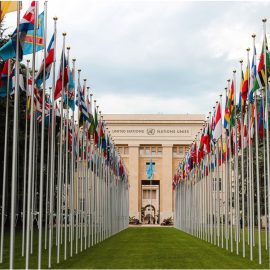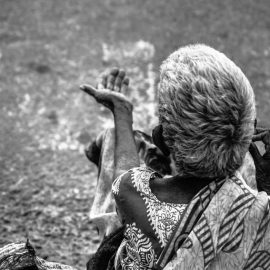

This article is an excerpt from the Shortform book guide to "Development as Freedom" by Amartya Sen. Shortform has the world's best summaries and analyses of books you should be reading.
Like this article? Sign up for a free trial here .
What causes a mass food shortage? Are famines easy to prevent?
In Development as Freedom, Amartya Sen says that all famines are avoidable. While it’s commonly assumed famines are caused by an imbalance between population and food supply, it’s actually a result of government failure.
Read more to know how to prevent famine through government intervention and assistance.
How Famines Happen
To know how to prevent famines, Sen says it’s vital to understand three truths about how and why they occur:
- Famines can occur even without a drop in the overall food supply. In 1974, Bangladesh suffered a famine despite having higher food availability per person than in the previous three years.
- Famines rarely affect an entire population. Sen says most famines affect less than 5-10% of the population.
Starvation is usually not responsible for most casualties in a famine. Diseases made worse by undernourishment, poor sanitation, and migration are most responsible for the suffering.
A New Cause of Famine?
Sen argues that all famines are preventable. However, violent conflict was the only cause of famines in 2000, which was when Development as Freedom was published. Since then, the famine in Madagascar has changed traditional thinking about what leads to famine.
The only country whose famine isn’t caused by conflict is Madagascar. Instead, it’s generally understood that climate change has contributed to the current four-decade drought currently experienced by the island nation. The UN calls it a “climate-change” famine, and food prices have soared as a result. Although Sen didn’t mention the impact of changing climate on famine, he would likely argue that the government must intervene to ensure Madagascar can avoid further suffering.
How to Prevent Famines
Sen also says it’s not difficult or expensive for governments to prevent famines, and he identifies three ways societies can guard against them: private markets, free trade, and government support.
- Private markets provide incentives for people to produce and distribute food.
- Free trade allows people to convert their labor power into food.
- Government support enables famines to be avoided by offering supplemental assistance when there is a recession, natural disaster, or price shocks.
The Three Solutions
First, if a famine affects 10% of the population (which would be very high), it would take only around 3% of the Gross Domestic Product (GDP) for the government to supplement the full incomes of the people affected. Even in the Indian famine of 1344-1345, the emperor was able to successfully implement a famine relief program by replacing incomes.
Second, overall economic growth is a much better way to prevent famines than increased food production. Japan, South Korea, and Singapore all experienced substantial drops in per-person food production as their economies grew. They switched to manufacturing, yet their populations remained well-fed, as they could afford to import food. Also, if the food supply dwindles too much, rich nations with strong industrial bases can import food to compensate for the relative reduction in their agricultural sector.
Third, no famine has occurred in a functioning democracy. Democracy provides an incentive for government officials to take the steps necessary to alleviate food shortages.
Sen blames government mismanagement for the Chinese famine that occurred during the Great Leap Forward of 1958-1961, in which around 30 million suffered from starvation and related illnesses. Sen argues that democracies wouldn’t have tolerated the widespread mismanagement that caused the suffering. Democracy makes people aware of the extent of the damage (through a free press) and gives the people a means for addressing it (through elections).
(Shortform note: While Sen puts the responsibility for famine relief on the affected country, the charitable organization Oxfam has a five-step plan to prevent famine, including outside help. It includes providing clean water, encouraging proper sanitation, emergency food and cash assistance, supplying seeds for farming, and government accountability. This kind of private intervention can help prevent famine when government dysfunction is the cause.)

———End of Preview———
Like what you just read? Read the rest of the world's best book summary and analysis of Amartya Sen's "Development as Freedom" at Shortform .
Here's what you'll find in our full Development as Freedom summary :
- The five types of freedom that are integral to economic development
- How democracy can prevent famine
- How empowering women helps communities






